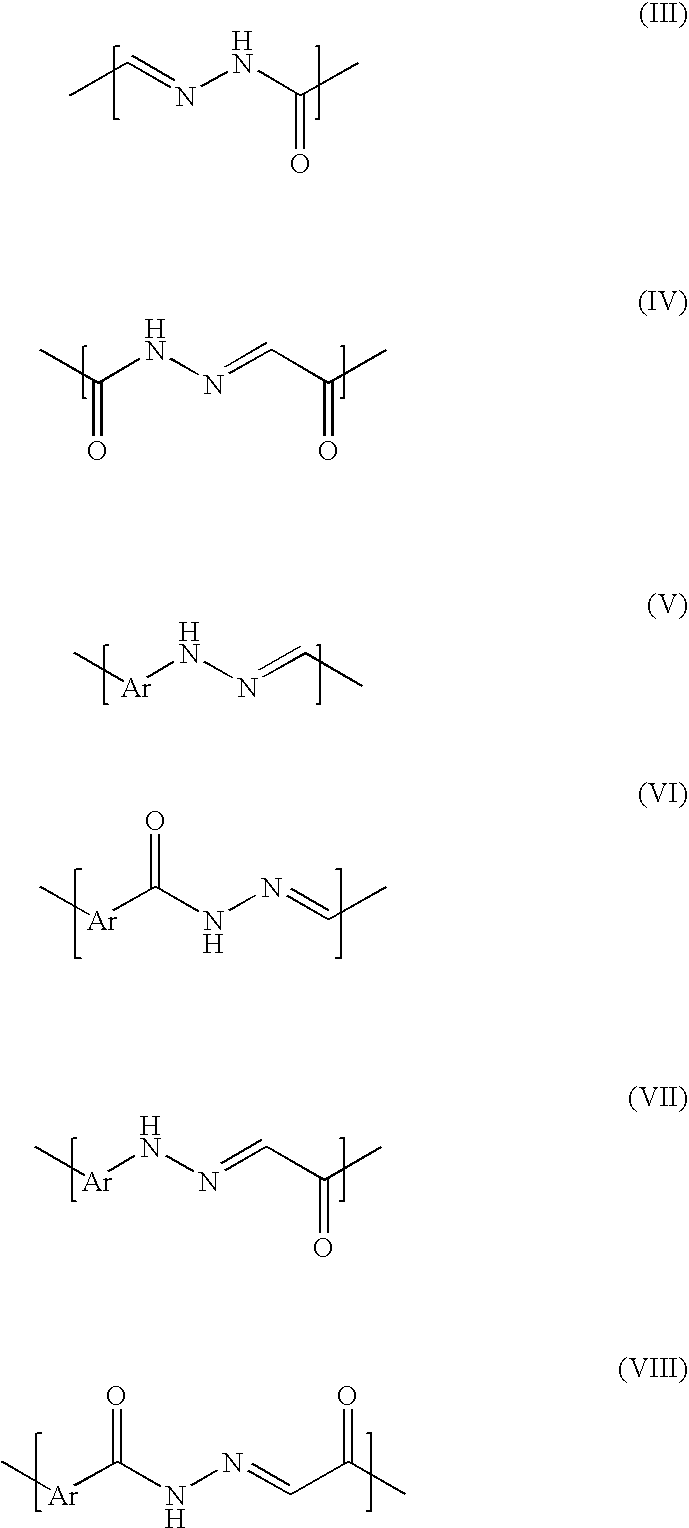Targeting of glycoprotein therapeutics
a glycoprotein and therapeutic technology, applied in the field of protein therapeutics, can solve the problems of large cimpr expression on endothelial cells as well as other cell types, and insufficient targeting of proteins to tissues, etc., and achieve the effect of reducing the risk of side chain removal
- Summary
- Abstract
- Description
- Claims
- Application Information
AI Technical Summary
Benefits of technology
Problems solved by technology
Method used
Image
Examples
example 1
Preparation of a Dihydrazide PEG Conjugate of α-galactosidase
[0117] One milligram of recombinant human α-galactosidase A (α-Gal) in 50 mM sodium phosphate pH 7 was treated overnight with 20 mU / mg Arthrobacter™ neuraminidase. A portion (0.5 mg) of the product in. 100 μL was incubated with 100 μL 10% w / v 10 kDa dihydrazide PEG (Sunbio) and 25 μL 0.2 M sodium succinate pH 5.5 (final pH ˜5.8) overnight at 37° C. with 9 μL of 1 mg / mL recombinant Dactylium dendroides galactose oxidase. The product was dialyzed against 10 mM sodium phosphate pH 7 and applied to a DEAE Sepharose™ column (Pharmacia) equilibrated with the same buffer and eluted with a gradient from 0 to 0.5 M NaCl in 10 mM phosphate pH 7. The peak fraction was concentrated and exchanged into 0.05 M sodium phosphate pH 7 using 50 kDa MWCO centrifugal ultrafilters (Amicon). A portion was run on a 4-12% SDS polyacrylamide gel (NuPAGE™, Invitrogen) using a neutral-pH MOPS / SDS running buffer at 200 V for 1 hour, and the gel stain...
example 2
pH Dependence of Hydrazide PEG Conjugate Stability
[0118] Aliquots (4 μL, ˜2 μg) of a DEAE Sepharose™ purified dihydrazide conjugate prepared as described in Example 1 were incubated overnight in 45 μL 50 mM buffer (either phosphate, succinate, citrate, or acetate) at between pH 7.0 and 5.0 for 14 hours at 37° C., and then concentrated on Microcon™ 50 centrifugal ultrafilters (Amicon) for 10 minutes at 4° C. The retained volumes were collected and a portion of each run on a SDS polyacrylamide gel (NuPAGE™, Invitrogen) as described in Example 1. As shown in FIG. 5, incubation at pH 7 resulted in retention of more than 80% of the PEGylated material in PEGylated form (as compared to an unincubated control), while reducing the pH of the solution led to a decrease in the amount of PEGylated material. At pH 5.5, less than 10% of the initial PEGylated material remained. There was a corresponding increase in the free α-galactosidase.
example 3
Effect of PEGylation on Binding of αGal to CIMPR In Vitro
[0119] Two preparations of α-galactosidase conjugated to either a 4-arm dendrimer (“star”) hydrazide PEG (Hz4PEG) or a 8-arm hydrazide PEG (Hz8PEG), each of 10 kDa molecular weight, in which propionyl hydrazide groups were incorporated into the PEG main chain at random positions (SunBio) were prepared as described in Example 1, except that concentration of PEGs in the conjugation step was either 0.5 or 10% w / v. The purified conjugates were assessed for binding to purified cation-independent mannose-6-phosphate receptor (CIMPR) by surface plasmon resonance (Biacore). Conjugate or unmodified α-galactosidase were diluted and pumped tangentially across a Biacore flow cell at 20 μL / min. The soluble form of CIMPR (lacking the membrane anchor sequence) was conjugated to an activated dextran-coated surface on the optical face of the cell using NHS chemistry. Binding (assessed by a change in refractive index) expressed in RU (resonanc...
PUM
| Property | Measurement | Unit |
|---|---|---|
| Acidity | aaaaa | aaaaa |
| Cell angle | aaaaa | aaaaa |
Abstract
Description
Claims
Application Information
 Login to View More
Login to View More - R&D
- Intellectual Property
- Life Sciences
- Materials
- Tech Scout
- Unparalleled Data Quality
- Higher Quality Content
- 60% Fewer Hallucinations
Browse by: Latest US Patents, China's latest patents, Technical Efficacy Thesaurus, Application Domain, Technology Topic, Popular Technical Reports.
© 2025 PatSnap. All rights reserved.Legal|Privacy policy|Modern Slavery Act Transparency Statement|Sitemap|About US| Contact US: help@patsnap.com



